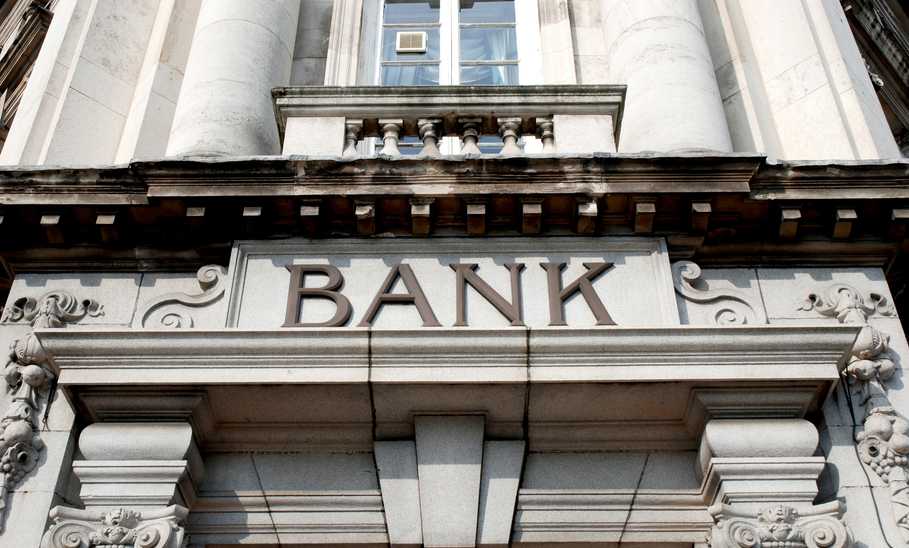Western Alliance Bank Review 2025


Our evaluations and opinions are not influenced by our advertising relationships, but we may earn a commission from our partners’ links. This content is created by TIME Stamped, under TIME’s direction and produced in accordance with TIME’s editorial guidelines and overseen by TIME’s editorial staff. Learn more about it.
With over $70 billion in assets, Western Alliance Bank is among the top 40 largest banks in the United States. It offers several consumer banking products, including checking, savings, money market, and certificates of deposit (CD) accounts. Customers can also open an individual retirement account (IRA) through Western Alliance.
Besides consumer banking products, Western Alliance also offers small business and commercial banking products and services. Here’s what to know about this bank, its products, how it stacks up to competitors, and who it’s best for.
Western Alliance is primarily located in the Southwestern U.S., with a broad presence in Arizona, California, and Nevada. It could be a good choice if you live in one of these states and are looking for a new bank. Western Alliance Bank offers several types of accounts, making it easy to do all your banking in one place. As of June 19, 2024, its high-yield savings account offers an impressive 5.36% annual percentage yield (APY).
Consumers can choose from two types of checking accounts: a standard option and an interest-bearing option.
The Western Alliance Personal Checking account is a fairly basic, non-interest-bearing account featuring unlimited transactions and free access to ATMs in the MoneyPass network. It has a $5 monthly maintenance fee that can easily be waived if you maintain a daily balance of at least $500 or set up recurring monthly direct deposits.
If you’d rather earn interest on your checking balance, the Personal Interest Checking account may be your best bet. Like the standard option, you’ll get unlimited transactions and free access to MoneyPass ATMs. The monthly service fee is $10, though it can be waived if you’re over 55 or maintain a daily balance of at least $1,500. While this account is interest-bearing, Western Alliance isn’t forthcoming about its APY.
Western Alliance offers three types of savings accounts: Personal Savings, High-Yield Savings Premier, and IRA Savings accounts.
Western Alliance Bank’s Personal Savings account is the bank’s standard savings account. You’ll earn interest with this account, but, again, the bank doesn’t disclose an APY. Interest is paid out monthly.
You’ll need a $100 minimum initial deposit to open a new Personal Savings account. This account has a $3 monthly service fee. (The fee can be waived if you’re under 18 or if you maintain a $250 daily balance.)
While Western Alliance isn’t forthcoming about some of its APYs, it is transparent about the APY on its High-Yield Savings Premier account. Account holders earn an impressively high 5.36% APY (as of June 19, 2024).
The account does require a $500 minimum opening deposit. While this is fairly high, there are no monthly service fees.
If you’re interested in a tax-advantaged retirement account, you can open an IRA savings account through Western Alliance. It offers traditional, Roth, and SEP IRA options, each with slightly different benefits. You’ll need a $100 minimum deposit to open an IRA savings account.
Western Alliance offers high-yield CD accounts, with rates ranging from 5.05% to 5.21%. You can choose from a CD term as short as three months or as long as 12 months. The bank’s three-month CD offers the highest rate, while its 12-month CD offers the lowest rate.
Western Alliance’s consumer loan options are fairly limited, though it does offer small business and commercial loans. You can also apply for a home mortgage through its partner brand, AmeriHome Mortgage.
Besides the products we’ve outlined, Western Alliance also offers a Personal Money Market Account, which works like a hybrid checking/savings account. This account earns interest, like a savings account but has check-writing capabilities, like a checking account.
The minimum opening deposit for a Western Alliance Personal Money Market account is $100. There’s a $10 monthly service fee, but it can be waived if you maintain a balance of at least $2,500.
Like many banks, Western Alliance offers a convenient online banking platform for account holders to view and track their balances, make payments, stop payments, and more. Enhanced services, such as the ability to send wire transfers online, are also available.
Western Alliance offers a mobile app in addition to its online banking platform. The app lets you view your balances, pay bills, and deposit from your iOS or Android smartphone.
Western Alliance Bank is a subsidiary of the Western Alliance Bancorporation holding company, which also owns the following partner brands: Alliance Bank of Arizona, Bank of Nevada, Bridge Bank, First Independent Bank, Torrey Pines Bank, Alliance Association Bank, and AmeriHome Mortgage.
Founded in 1994 and led by CEO Ken Vecchione, Western Alliance Bank has grown to become the 35th-largest bank in the United States.
While it has fairly strong credit ratings from independent companies, such as Moody’s Investors Service and Kroll Bond Rating Agency, Fitch downgraded Western Alliance Bank’s credit rating from bbb+ to bbb- minus in 2023. Despite its downgrade, a bbb- rating still indicates that Western Alliance is at low risk of default.
Western Alliance and its partner brands are primarily located in the Southwestern United States. There are locations in several cities and towns in Arizona, California, and Nevada. That said, a few branches are also available in other locations, including Chicago and Washington, D.C.
Here’s how Western Alliance Bank compares with some of its competitors.
CIT Bank is a large digital bank offering various banking products and services. Like Western Alliance, it has an interest checking account, though it’s more transparent about its APYs. It also has a high-yield savings account with a rate above 5%.
Overall, CIT Bank is a better choice for online banking because you can open checking, savings, CD, and money market accounts. But, if you’re located in the Southwest and prefer an in-person banking option, Western Alliance is a good fit.
SoFi is another popular online bank known for its minimal fees and relatively low rates. It offers a wider range of products than Western Alliance; it could be ideal if you’re looking to bank, invest, and buy insurance under one umbrella. You can also get a mortgage, student loan, or personal loan from SoFi, making it a better choice than Western Alliance for those seeking a loan.
But, like CIT Bank, SoFi doesn’t have any physical branches. Thus, it’s not ideal if you prefer to do your banking in person. SoFi’s savings account also has a lower APY than Western Alliance’s high-yield savings.
Discover offers wider range of products than Western Alliance, including multiple loan types. Thus, it’s a good choice if you want the option to borrow money (in addition to banking). With Discover, you can open a savings, checking, money market, or CD account, like you can with Western Alliance.
Those interested in opening a new credit card may also find Discover a better fit. The bank offers several credit cards, including straightforward cash back cards that reward you for your spending. That said, Western Alliance has physical locations, but Discover does not.
While Western Alliance offers checking, savings, money market, CD, and IRA savings accounts, Bread Savings specializes in high-yield savings and CDs. Those seeking longer-term CDs could find what they need with Bread Savings as it offers CD terms of up to five years.
However, Western Alliance’s CD APYs and its high-yield savings APY are slightly higher than Bread Savings. Bread Savings’ CD account rates range from 4.15% to 5.25%, and its high-yield account has a 5.15% APY.
Overall, Western Alliance offers a no-frills banking experience, providing a range of standard banking accounts and an IRA savings account. Its high-yield savings account is stellar, offering a generous APY of 5.36%. But its lack of loan, insurance, and credit card products may mean it’s not a fit for some people, especially if you prefer to manage your finances in one place.
Western Alliance Bank is headquartered in Phoenix, Arizona. It has locations in several cities and towns across Arizona, California, and Nevada. It does have a few branches in other states but primarily in the Southwestern U.S.
Western Alliance Bank is relatively safe. Its deposit accounts carry FDIC insurance, so your deposits are protected up to $250,000 if this bank goes under.
According to FDIC data, Western Alliance Bank is the 35th-largest bank in the United States. It currently holds over $70 billion in assets.
The information presented here is created by TIME Stamped and overseen by TIME editorial staff. To learn more, see our About Us page.



